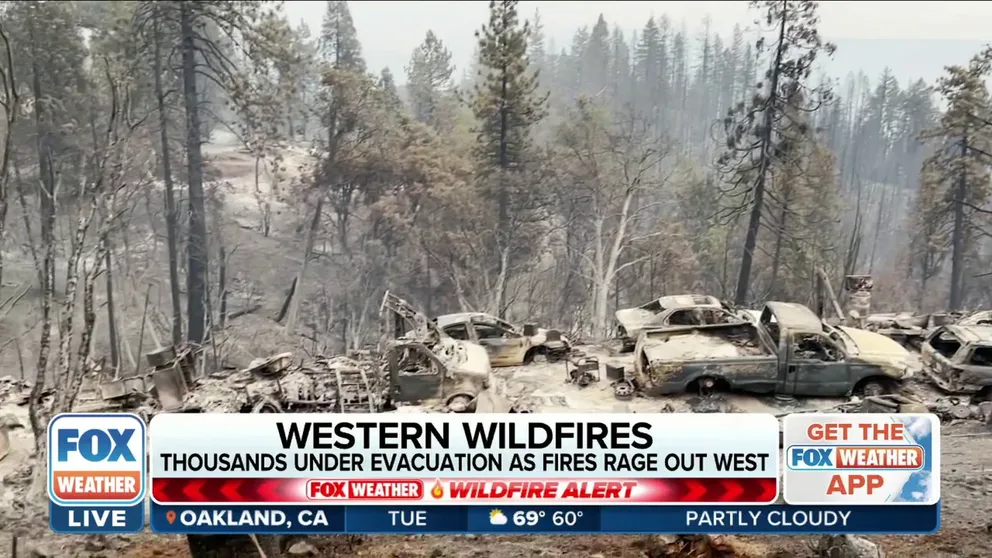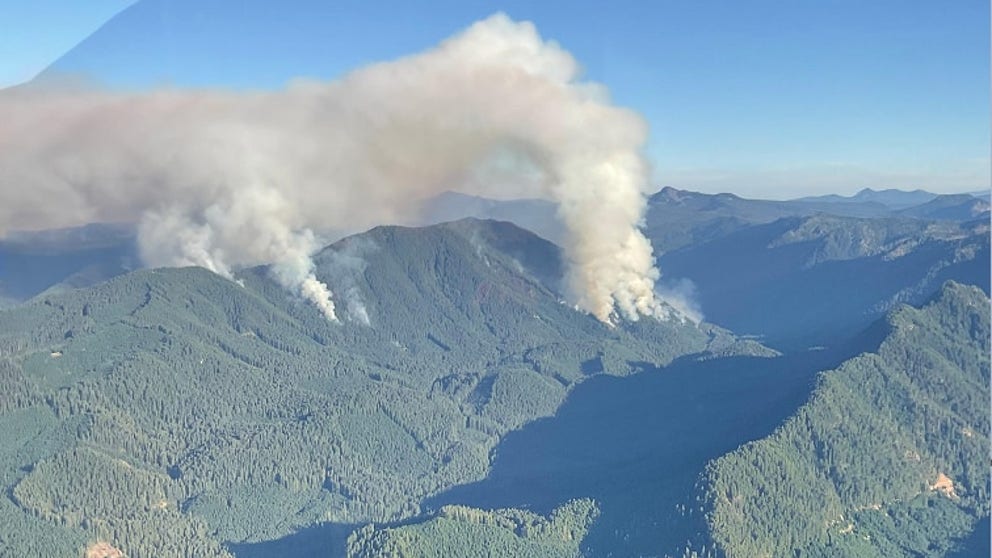Exploding Pacific Northwest wildfires pose health risks, air quality issues throughout West
The combination of low humidity, gusty winds and drought conditions created favorable conditions for fires to spread rapidly.
Mosquito Fire presents air quality concerns, smoke reduces visibility
The Mosquito Fire, one of California’s largest active wildfires, has burned close to 50,000 acres. Thousands of evacuations have taken place as smoke fills the sky in Northern California.
Sights of ash and smoke greeted residents of Washington and Oregon over the weekend as more than a dozen large fires burned through the wilderness of the Pacific Northwest.
The FOX Forecast Center continues to track poor air quality and smoke into the workweek that will be prevalent throughout the Pacific Northwest and into the Upper Midwest.
On Tuesday, the smoke is forecast to shift east, creating hazy conditions for parts of the Upper Midwest.

(FOX Weather)
The combination of low humidity, gusty winds and drought conditions created favorable settings for fires to spread rapidly.
More than 5,000 firefighters are working to control the large blazes that have destroyed over a quarter of a million acres.
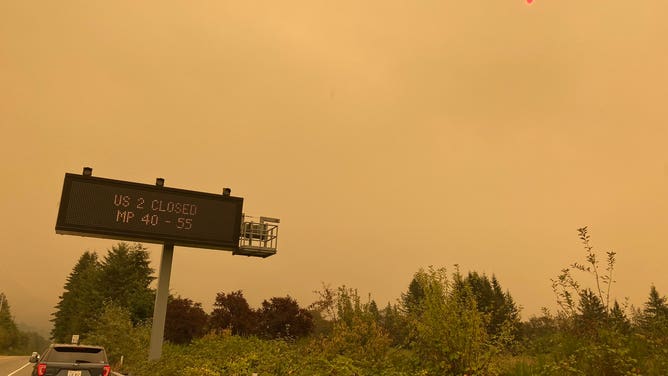
Wildfire in Washington state.
(Official Washington State Patrol District 7 )
Smoke and ash were reported from Seattle to Portland, Oregon, over the weekend as easterly to southerly winds caused the fires’ plumes to drift toward populated communities.
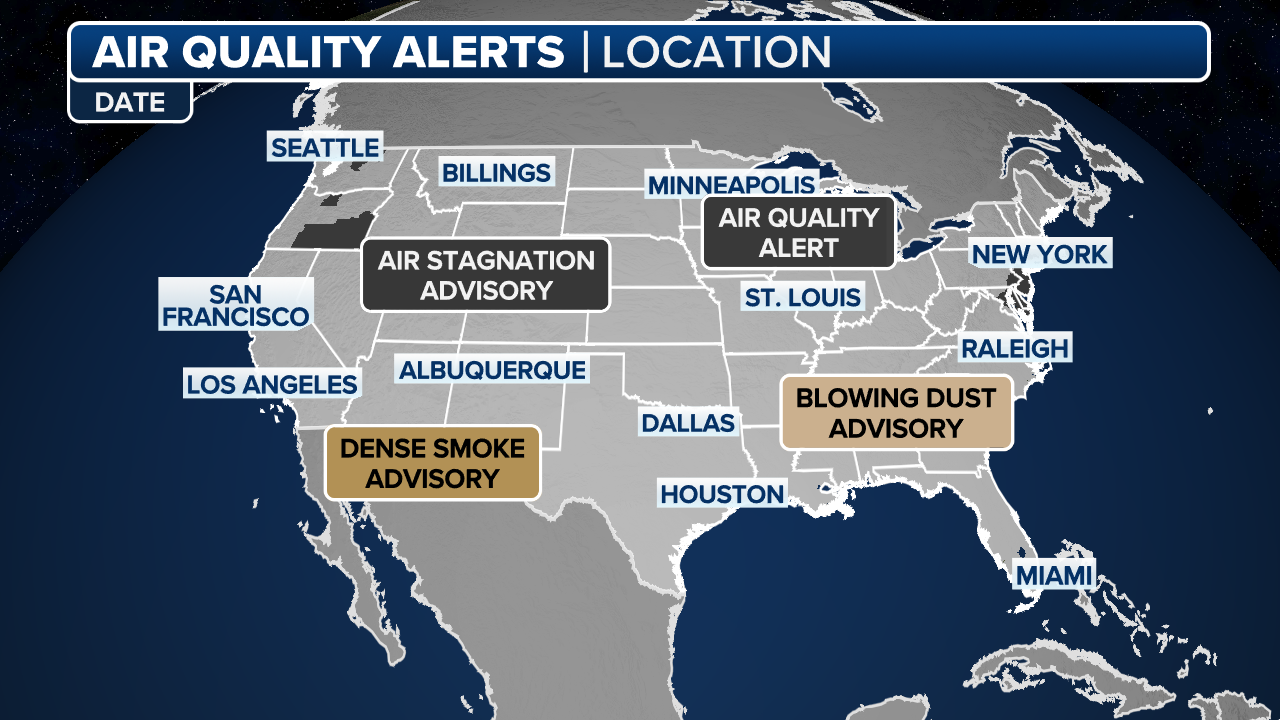
(FOX Weather)
Air quality alerts were issued for several counties in the region due to readings in the unhealthy range. The National Weather Service advised residents near Seattle to stay indoors, avoid strenuous activity and close windows and doors because of the thick smoke.
Air quality alerts continue Tuesday with "unhealthy" advisories for the eastern half of Washington state and into Montana and northern Idaho.
"Very unhealthy" air alerts have been issued east of Seattle near the Wenatchee National Forest and in Idaho for the Clearwater Mountains.
In Oregon, near La Pine, "hazardous" air alerts are in place for part of the Deschutes National Forest, including Cresent and Gilchrist, Oregon.
WILDFIRES CAN BE DANGEROUS TO YOUR HEALTH EVEN IF YOU’RE NOWHERE NEAR ONE
The Northwest Interagency Coordination Center is working on at least 17 large blazes throughout the region.
"What makes a large fire is 100 acres or more in timber or 300 acres or more in grass or brush. Until then, it is usually under local jurisdiction," Carol Connolly public information specialist NICC said.
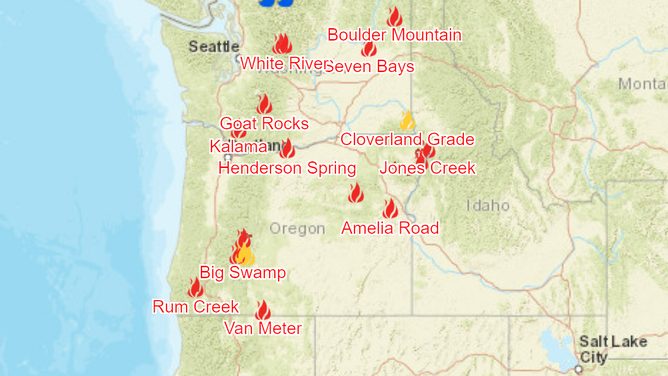
Sixteen large fires are burning in the Pacific Northwest.
The fires of most concern to incident command teams include the Cedar Creek, Double Creek and Boulder Mountain and the newly sparked Bolt Creek Fire.
Wildfire smoke creates colorful sunsets in Seattle

The sunset, rain and smoke from wildfires in the Pacific Northwest created a colorful sunset in Seattle on Sunday, Sept. 11, 2022. (Image credit: Joe Boomgard-Zagrodnik/Twitter)
Wildfire smoke combined with incoming rain showers to create a stunning sunset around the Seattle area Sunday evening.
Smoke poured into the Seattle area from the Bolt Creek Fire over the weekend. Smoke-choked air is full of tiny particles of burning debris that create light refraction within the clouds.
Sunlight contains multiple wavelengths that include all the colors of visible light, and when all visible wavelengths combine, the sunlight looks white.
But particles in clouds, and smoke plumes, can block some shorter wavelengths of blue and green light from shining through, leaving the longer red wavelengths behind.
On Sunday evening, as the sunset began to turn its usual colors, the prevailing smoke supercharged the red hues. And with cloud layers at a perfect altitude from passing showers to serve as nature’s easel, the result was a sunset for the ages.
Cedar Creek Fire – Oregon
The Cedar Creek Fire is burning in Oregon.
The fire has burned more than 51,000 acres and is 12% contained. (U.S. Forest Service)
The NICC reports the fire has burned more than 86,734 acres and is 0% contained.
Most of the flames are burning inside the Willamette National Forest, but private lands are threatened in the western part of the state.
An estimated 1,900 homes have been put under some type of evacuation notice as the blaze is out of control.
It is believed storms in early August produced lightning that started the fire. The U.S. Forest Service said around 20 to 30 new fires started because of the storms.
Oregon Gov. Kate Brown declared an emergency Friday to help mobilize sources for the fire burning in Lane County.
"The Cedar Creek Fire grew rapidly towards Oregon communities this morning, and the fire’s growth potential in the coming days is troubling, requiring additional resources to battle the fire and support the state’s response," Brown said in a statement.
Double Creek Fire – Oregon
The Pacific Northwest’s largest fire of the year has consumed more than 155,297 acres in eastern Oregon along the Snake River. Just Sunday morning, the fire grew to nearly 42,814 acres.
Officials said between 100 and 200 homes are threatened, and the fire is burning close to the community of Imnaha.
Similar to the Cedar Creek Fire, August thunderstorms that produced lightning are being blamed for starting the blaze.
More than 850 personnel are working to bring the fire under control, and at last report, it was only around 15% contained.
SEE WHAT IT’S LIKE TO HAVE THE MOST IMPORTANT EYES IN THE FOREST
Boulder Mountain Fire – Washington
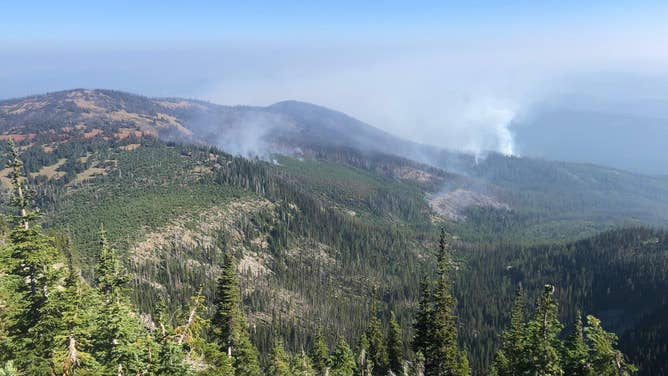
The Boulder Mountain Fire is burning in the northeastern Washington.
(U.S. Forest Service)
The Boulder Mountain Fire is burning in the northeastern corner of the state of Washington, and the NICC says it is another example of a lightning-sparked blaze.
Because of the rural nature of the fire, only 24 structures are threatened, but crews have had some success in controlling the wildfire.
Over 2,175 acres have burned, and official containment is reported to be around 21%.
A mixture of state, federal and private land is being impacted, and firefighters have reported difficulty working the fire because of the terrain and heavy timber.
Bolt Creek Fire – Washington
The Washington State Department of National Resources says firefighters are in structure protection mode for a fast fire that started east of Seattle on Saturday.
Authorities estimate the Bolt Creek Fire has burned more than 7,600 acres and is 2% contained.
Evacuations have been ordered around the town of Skykomish by the King County Sheriff’s Office.
First responders said at least 300 homes are threatened by the fire.
So far, there's no word on what sparked the initial flames.
California receives reprieve from fire weather
Higher humidity values and increased rains from former Tropical Storm Kay have helped slow the spread of several major fires in California.
CAL Fire reports the Fairview and the Fork fires in the southern and central parts of the state are at moderate containment levels.
A blaze that continues to burn out of control and threaten homes is the Mosquito Fire in the Tahoe National Forest.
Firefighters report more than 46,500 acres have burned, and there is 10% containment.
So far in 2022, CAL Fire and the U.S. Forest Service report more than 6,200 fires have burned over 316,000 acres in the Golden State.
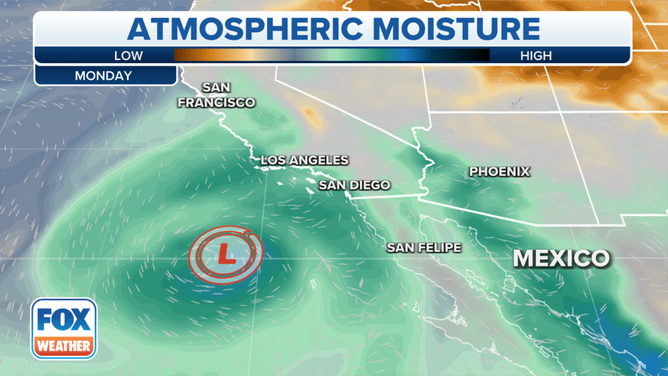
Moisture from the remnants of Kay.
(FOX Weather)
